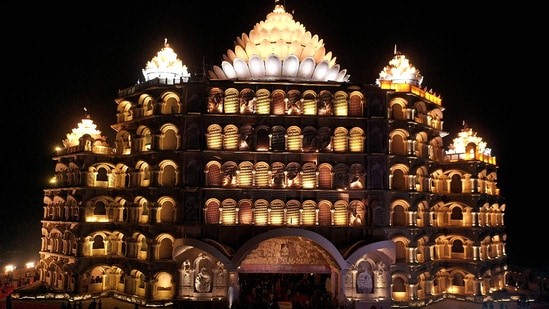Free Courses Sale ends Soon, Get It Now


Free Courses Sale ends Soon, Get It Now



Disclaimer: Copyright infringement not intended.
Context
Prime Minister Narendra Modi inaugurated the Swarved Mahamandir, a magnificent seven-floor temple located in Varanasi's Umaraha area which is the world’s largest meditation centre.
Details
Architectural Marvels
Distinctive Features
Spiritual Significance
Meditation in India
Historical Significance:
Meditation Traditions:
Influence on Culture and Society:
Conclusion
The Swarved Mahamandir, inspired by the Swarveda, stands as a testament to spiritual enlightenment and peacefulness. With its architectural brilliance and focus on propagating profound spiritual teachings, it strives to illuminate humankind with a divine spiritual aura, emphasizing inner peace and spiritual wisdom.
|
PRACTICE QUESTION Q. Discuss the historical origins and evolution of meditation practices, highlighting their significance in various ancient civilizations. How have these practices shaped cultural, spiritual, and philosophical aspects across different societies? (250 Words) |
© 2024 iasgyan. All right reserved